Restore Burnt Pots Easily with these simple, yet effective DIY tricks! We’ve all been there, haven’t we? Distracted by a phone call, engrossed in a good book, or simply lost in thought, only to be jolted back to reality by the acrid smell of something burning on the stove. The horror! A perfectly good pot, seemingly ruined by a stubborn layer of burnt food. But don’t despair! Before you resign yourself to scrubbing for hours or, worse, tossing that pot in the trash, let me share some amazing DIY hacks that will have your cookware looking as good as new.
Throughout history, resourceful cooks have developed ingenious methods for cleaning and maintaining their cookware. From using wood ash in ancient times to the modern-day marvels of baking soda and vinegar, the quest to keep pots and pans sparkling has always been a priority. After all, a clean pot is not only aesthetically pleasing but also essential for ensuring the quality and flavor of your meals.
Why do you need these DIY tricks? Because nobody wants to spend their precious time and energy scrubbing away at burnt food residue! These methods are not only incredibly effective, but they also utilize common household ingredients, saving you money and avoiding harsh chemicals. Plus, learning how to restore burnt pots easily is a valuable skill that will extend the life of your cookware and keep your kitchen looking its best. So, let’s dive in and discover the secrets to effortlessly removing those stubborn burnt messes!
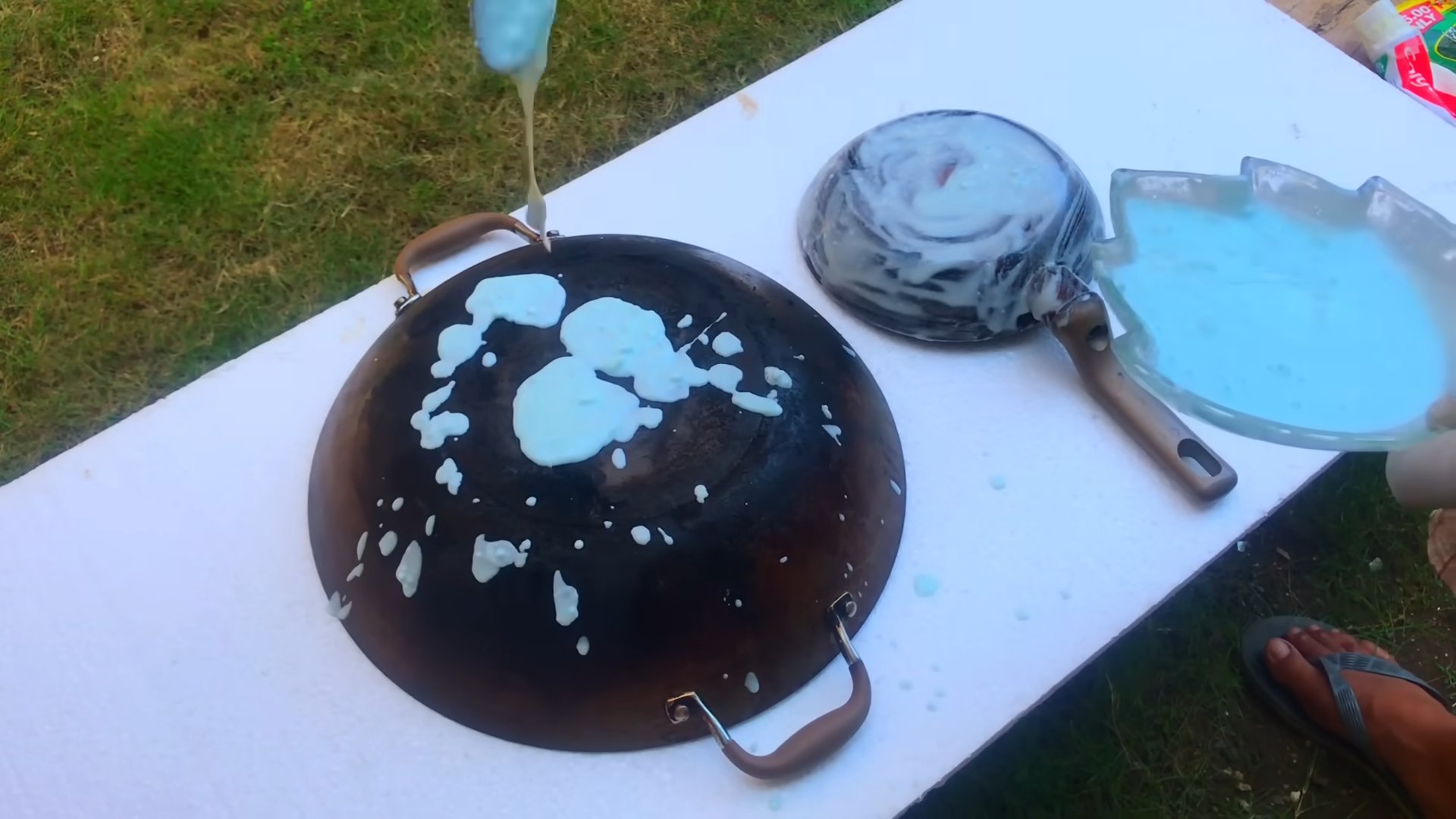
Restore Your Burnt Pots and Pans: A DIY Guide
Okay, let’s face it, we’ve all been there. You’re multitasking, maybe watching your favorite show, and suddenly, you smell something… not so good. You rush to the kitchen and find your beloved pot or pan sporting a lovely layer of burnt-on food. Don’t despair! Before you toss it in the trash, let me show you a super easy and effective way to restore your burnt cookware to its former glory. This method is gentle, uses common household ingredients, and will save you money and heartache.
What You’ll Need:
Before we dive in, gather these simple supplies. I promise, you probably already have most of them!
* Baking Soda: This is our magic ingredient! It’s a mild abrasive and helps loosen the burnt food.
* White Vinegar: The acid in vinegar reacts with the baking soda to create a powerful cleaning action.
* Water: Essential for creating the cleaning solution.
* Dish Soap: For a final clean and degreasing.
* Scrubbing Sponge or Pad: Choose a non-abrasive sponge or pad to avoid scratching your cookware. For really stubborn spots, you might need a slightly more abrasive pad, but test it in an inconspicuous area first.
* Soft Cloth or Towel: For drying your sparkling clean pot or pan.
* Optional: Rubber gloves (to protect your hands, especially if you have sensitive skin).
The Baking Soda and Vinegar Powerhouse: Step-by-Step Instructions
This method works wonders on most types of burnt food, from rice and pasta to sauces and even stubborn milk residue. Here’s how to do it:
1. Assess the Damage: Take a good look at the burnt area. How thick is the layer? Is it just a light scorching, or is it a hardened, blackened mess? This will help you determine how long to let the solution soak.
2. Cover the Burnt Area: Pour a generous layer of baking soda directly onto the burnt food. Make sure you cover all the affected areas completely. Don’t be shy – the more baking soda, the better!
3. Add the Vinegar: Now, slowly pour white vinegar over the baking soda. You’ll see it start to fizz and bubble – that’s the magic happening! The reaction between the baking soda and vinegar helps to lift the burnt food particles.
4. Add Water and Bring to a Simmer: Add enough water to cover the burnt area completely. Place the pot or pan on the stovetop and bring the mixture to a simmer over medium heat.
5. Simmer for 10-15 Minutes: Let the mixture simmer for about 10-15 minutes. This allows the baking soda and vinegar to really penetrate the burnt food and loosen it from the surface. You’ll likely see some of the burnt food starting to lift off on its own. Keep an eye on the water level and add more if needed to ensure the burnt area remains submerged.
6. Let it Cool: Turn off the heat and let the pot or pan cool down completely. This is important because you don’t want to burn yourself, and the cooling process allows the solution to continue working its magic. I usually let it sit for at least 30 minutes, but longer is fine too, especially for heavily burnt pots.
7. Scrub Away the Residue: Once the pot or pan is cool enough to handle, it’s time to scrub! Use your non-abrasive sponge or pad to gently scrub the burnt food. You should find that most of it comes off quite easily. If there are still some stubborn spots, don’t force it. Try soaking the pot or pan in the baking soda and vinegar solution for a bit longer, or try the next step.
8. The Baking Soda Paste Power-Up: For those extra-stubborn spots, make a paste of baking soda and a little bit of water. Apply the paste directly to the burnt area and let it sit for a few minutes. Then, use your scrubbing sponge or pad to gently scrub again. The paste acts as a more concentrated abrasive, helping to lift those last bits of burnt food.
9. Wash with Dish Soap: Once you’ve removed all the burnt food, wash the pot or pan thoroughly with dish soap and warm water. This will remove any remaining baking soda and vinegar residue and leave your cookware sparkling clean.
10. Dry Thoroughly: Finally, dry the pot or pan completely with a soft cloth or towel. This will prevent water spots and keep your cookware looking its best.
Dealing with Seriously Stubborn Burns: The Overnight Soak
Sometimes, you’re dealing with a truly epic burnt mess. In these cases, the simmering method might not be enough. Don’t worry, I have a solution for that too! This involves an overnight soak, which gives the baking soda and vinegar plenty of time to work their magic.
1. Follow Steps 1-3 Above: Start by covering the burnt area with baking soda, adding vinegar, and then adding enough water to cover the burnt food.
2. Bring to a Simmer (Optional): You can optionally bring the mixture to a simmer for 10-15 minutes, as described in steps 4 and 5 above. This can help to loosen the burnt food initially, but it’s not essential.
3. Let it Soak Overnight: Turn off the heat (if you simmered it) and let the pot or pan soak overnight. This gives the baking soda and vinegar plenty of time to penetrate the burnt food and loosen it from the surface.
4. Scrub and Wash: The next morning, scrub the pot or pan with your non-abrasive sponge or pad. You should find that the burnt food comes off much more easily after the overnight soak. Wash with dish soap and warm water, and dry thoroughly.
Tips and Tricks for Success
* Prevention is Key: Of course, the best way to avoid burnt pots and pans is to prevent them in the first place! Pay attention to your cooking, stir frequently, and use the correct heat settings.
* Don’t Use Abrasive Cleaners: Avoid using harsh abrasive cleaners or steel wool, as these can scratch and damage your cookware.
* Test in an Inconspicuous Area: If you’re unsure about using a particular cleaning method on your cookware, test it in an inconspicuous area first to make sure it doesn’t cause any damage.
* Repeat if Necessary: If the burnt food is particularly stubborn, you may need to repeat the cleaning process a few times.
* For Enamel Cookware: Be extra gentle when cleaning enamel cookware, as it can be more prone to scratching.
* Cast Iron Care: If you’ve burnt food in your cast iron skillet, you might need to re-season it after cleaning. There are tons of great resources online that can guide you through the re-seasoning process.
* Aluminum Cookware: Avoid prolonged soaking of aluminum cookware in baking soda and vinegar, as it can cause discoloration.
Why This Method Works
The magic behind this DIY cleaning method lies in the chemical reaction between baking soda (a mild alkali) and white vinegar (an acid). When combined, they create carbon dioxide gas, which helps to lift the burnt food particles from the surface of the pot or pan. The baking soda also acts as a gentle abrasive, helping to scrub away the loosened residue. Plus, it’s a natural and non-toxic way to clean your cookware, which is always a bonus!
Beyond Baking Soda and Vinegar: Other Options to Consider
While the baking soda and vinegar method is my go-to, there are a few other options you can try if you’re still struggling to remove burnt food.
* Boiling Water and Dish Soap: Fill the pot or pan with water, add a squirt of dish soap, and bring it to a boil. Let it simmer for 15-20 minutes, then let it cool and scrub.
* Dryer Sheets: Place a dryer sheet in the pot or pan, fill it with water, and let it soak overnight. The chemicals in the dryer sheet can help to loosen the burnt food.
* Lemon Juice: Fill the pot or pan with water, add a few slices of lemon, and bring it to a boil. Let it simmer for 15-20 minutes, then let it cool and scrub. The acid in the lemon juice can help to break down the burnt food.
I hope this guide helps you rescue your burnt pots and pans! Remember to be patient, persistent, and don’t be afraid to experiment with different methods until you find what works best for you. Happy cleaning!
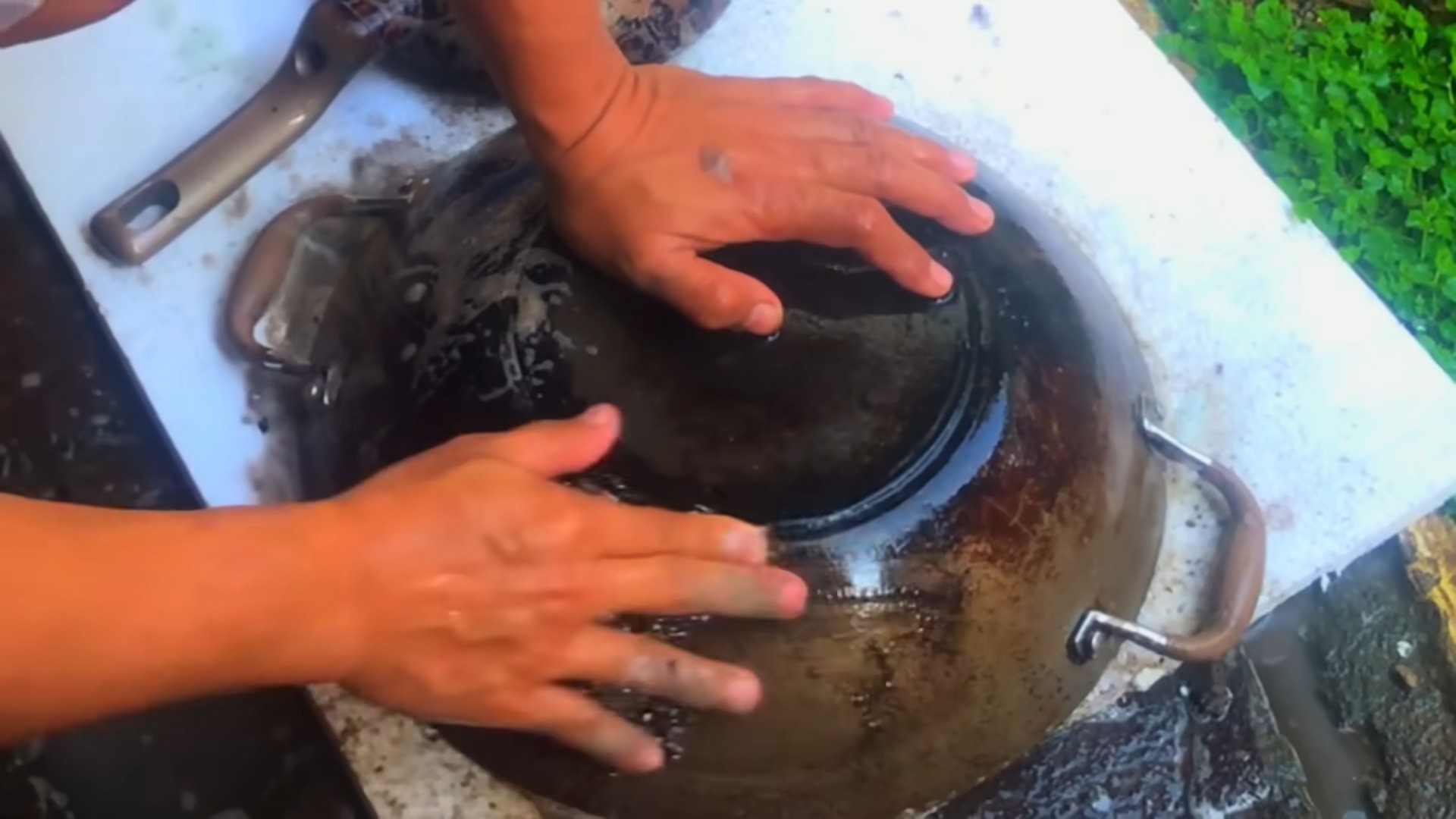
Conclusion
So, there you have it! This simple, yet incredibly effective DIY trick to restore burnt pots easily is a game-changer for anyone who spends time in the kitchen. No more agonizing over stubborn, blackened messes or resorting to harsh chemicals that can damage your cookware and potentially leach into your food. This method is gentle, affordable, and uses ingredients you likely already have in your pantry.
Why is this a must-try? Because it saves you time, money, and frustration. Think about all the pots and pans you’ve relegated to the back of the cupboard, deemed unsalvageable after a cooking mishap. This technique offers a second chance, breathing new life into your beloved cookware and preventing unnecessary waste. Plus, it’s a far more environmentally friendly option than constantly replacing burnt pots.
But the beauty of this DIY solution lies not only in its effectiveness but also in its adaptability. Feel free to experiment with variations to suit your specific needs and preferences. For instance, if you’re dealing with particularly stubborn burnt-on food, you can increase the amount of baking soda or vinegar used. You could also try adding a squeeze of lemon juice for its natural degreasing properties. For stainless steel pots, a gentle scrub with a non-abrasive sponge or a paste made of baking soda and water can further enhance the cleaning process. Remember to always test any cleaning method on a small, inconspicuous area first, especially if you’re working with delicate or antique cookware.
Beyond the basic method, consider these variations:
* For Enamel Cookware: Be extra gentle! Avoid abrasive scrubbers and opt for a soft cloth or sponge. A longer soaking time might be necessary.
* For Cast Iron Cookware: After cleaning, be sure to thoroughly dry and season your cast iron pot to prevent rust.
* For Aluminum Cookware: Avoid prolonged soaking in acidic solutions like vinegar, as it can discolor the aluminum.
We’re confident that this DIY trick will become your go-to solution for tackling burnt pots. It’s a simple, effective, and eco-friendly way to keep your cookware looking its best.
Now, it’s your turn! We wholeheartedly encourage you to try this DIY trick and experience the satisfaction of restoring your burnt pots easily. Don’t just take our word for it – see the results for yourself. And most importantly, share your experience with us! Let us know how it worked for you, any variations you tried, and any tips you discovered along the way. Your feedback will not only help us improve this guide but also inspire others to embrace the power of DIY solutions in the kitchen. Share your before-and-after photos and stories in the comments section below. We can’t wait to hear from you!
Frequently Asked Questions (FAQ)
Q: What kind of pots and pans can I use this method on?
A: This DIY trick is generally safe for most types of pots and pans, including stainless steel, enamel, glass, and even some non-stick surfaces. However, it’s always a good idea to test a small, inconspicuous area first, especially if you’re dealing with delicate or antique cookware. Avoid using abrasive scrubbers on non-stick surfaces, as they can damage the coating. For cast iron, remember to re-season after cleaning.
Q: How long should I soak the pot?
A: The soaking time will vary depending on the severity of the burn. For lightly burnt pots, 30 minutes to an hour may be sufficient. For more stubborn burns, you may need to soak the pot overnight. Check the pot periodically and add more water and vinegar if necessary.
Q: What if the burnt food is still stuck after soaking?
A: If the burnt food is still stuck after soaking, try gently scraping it off with a wooden spoon or spatula. Avoid using metal utensils, as they can scratch the surface of the pot. You can also try making a paste of baking soda and water and applying it to the burnt areas. Let it sit for a few minutes, then scrub gently with a non-abrasive sponge.
Q: Can I use this method on non-stick cookware?
A: Yes, you can use this method on non-stick cookware, but be extra careful. Avoid using abrasive scrubbers, as they can damage the non-stick coating. Opt for a soft cloth or sponge. You may also want to reduce the amount of vinegar used, as it can potentially degrade the non-stick coating over time.
Q: Is it safe to use vinegar and baking soda together?
A: Yes, it is safe to use vinegar and baking soda together. The combination creates a fizzing reaction that helps to loosen the burnt food. However, be aware that the reaction produces carbon dioxide gas, so make sure to work in a well-ventilated area.
Q: Can I use this method to clean burnt food from the bottom of my oven?
A: While this method is primarily designed for pots and pans, you can adapt it for cleaning burnt food from the bottom of your oven. Sprinkle baking soda over the burnt areas, then spray with vinegar. Let the mixture fizz for a few minutes, then scrub with a sponge or brush. You may need to repeat the process several times for stubborn stains.
Q: What if I don’t have vinegar? Can I use something else?
A: If you don’t have vinegar, you can try using lemon juice or cream of tartar as a substitute. Both have acidic properties that can help to loosen burnt food.
Q: How can I prevent my pots from burning in the first place?
A: Prevention is always better than cure! Here are a few tips to prevent your pots from burning:
* Use the correct heat setting for the type of food you’re cooking.
* Stir food frequently to prevent it from sticking to the bottom of the pot.
* Add enough liquid to prevent the food from drying out and burning.
* Keep a close eye on the pot while cooking, especially when simmering or boiling.
* Consider using a double boiler for delicate sauces or foods that are prone to burning.
Q: Will this method remove all types of stains and discoloration from my pots?
A: While this method is effective for removing burnt food, it may not remove all types of stains and discoloration. For stubborn stains, you may need to use a specialized cookware cleaner or try a different cleaning method.
Q: How often can I use this method to clean my pots?
A: You can use this method as often as needed to clean your pots. It’s a gentle and safe way to remove burnt food without damaging your cookware. However, avoid using abrasive scrubbers or harsh chemicals, as they can scratch or damage the surface of your pots.


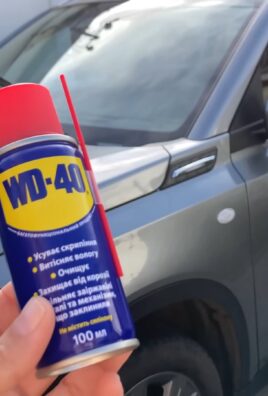
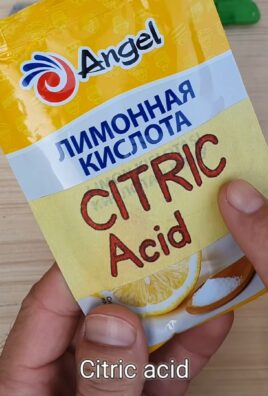
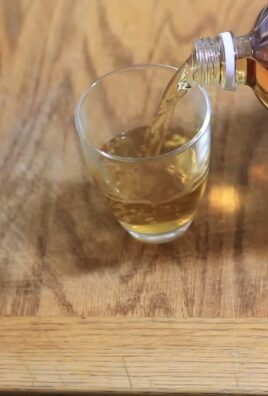
Leave a Comment